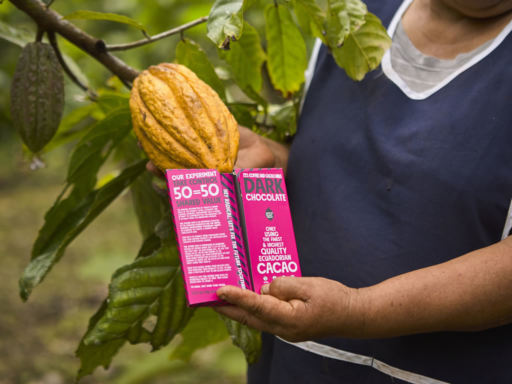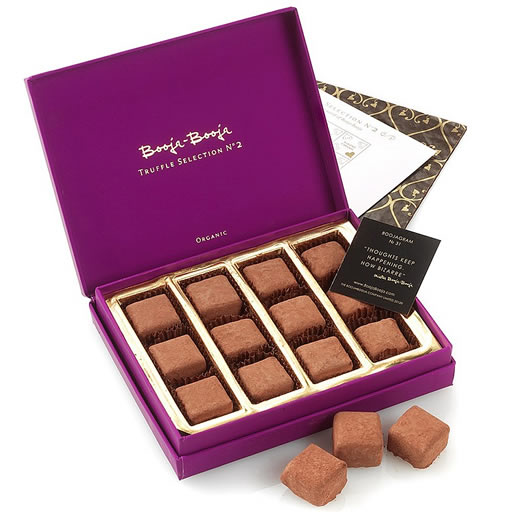In this article:
Chocolate manufacturer Callebaut has launched a new traceability tool to allow chocolatiers that use the brand's couverture to see where in the world their Callets come from.
The brand produces Belgian chocolate couverture which is used by professional chocolatiers, chefs, and home cooks around the planet.
The new traceability platform has been developed alongside Cocoa Horizons, Barry Callebaut's non-profit organisation that seeks to improve the livelihoods of the poorest cocoa farmers.
The new tracing QR code and tracking numbers appear on the latest bags in the Callebaut milk and dark chocolate ranges. Their white and gold chocolate isn't traceable on this system as these products contain cocoa butter and not cocoa liquor. Ruby chocolate uses a specific ingredient composition and its origins cannot be disclosed for competitive reasons, so also cannot be traced using this system.
How it Works
Scan the QR code on your mobile device or tap the tracking number into their website here.
You're then presented with a picture and description of the product together with your bag's batch number, production date and expiry date. Explore recipe ideas using this couverture or see its nutritional information and product certificates.
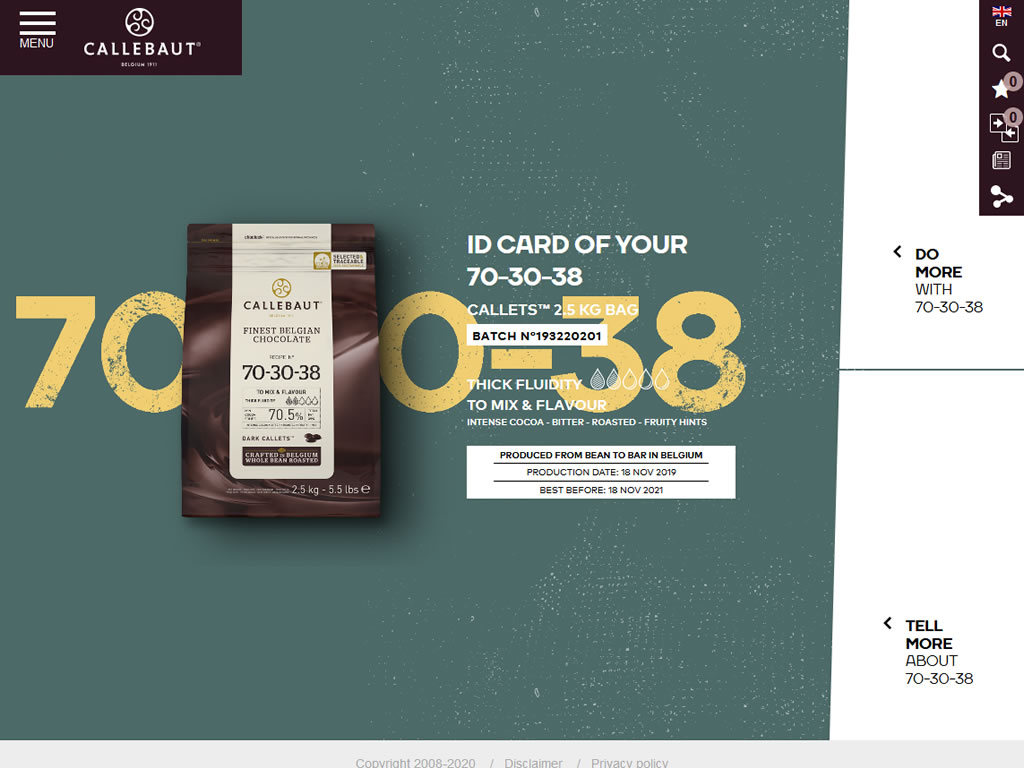
The more interesting information surfaces when you delve into the supply chain for this product. Through interactive maps, you can see the countries that supplied cocoa for your couverture, right down to the cooperatives used. It also shows where in the world the beans were converted into chocolate.

In total, it shows the journey of the cocoa beans from the cooperatives through to the point of distribution from the Callebaut website. Right now it doesn't show the individual farms that supply the cocoa, nor the path your bag of couverture took between leaving the Callebaut warehouse and arriving at your kitchen.
The website also offers printable materials with wording to the effect of "this chocolate empowers cocoa farmers," alongside selected Cocoa Horizons testimonies from cocoa farmers engaged with the programme.
The Positives
Watch Rotten's Bitter Chocolate episode on Netflix and you'll realise the chocolate supply chain is broken and desperately needs fixing. Farmers need - and deserve - truly fair cocoa prices for the work that they do, and producers need to ensure the cacao is sustainable and not the result of deforestation. We, as consumers, also need to accept that we are part of the problem, and should demand a sustainable, responsible, slave-free, ethical, and environmentally-sound product, even if that comes with a higher price tag.
I believe Callebaut's new tracing system is a positive first step in greater societal change. Using a sample code 10kg bag of Callebaut 845 milk chocolate couverture and for a 2.5kg bag of Callebaut 70-30-38 dark chocolate couverture, I can see the cocoa used for both batches of couverture is sourced from four buying organisations in Ecuador, six Cocobod Districts in Ghana, and over 60 cooperatives in the Ivory Coast. The cocoa is shipped from four sea ports to Callebaut's European factory in Belgium.
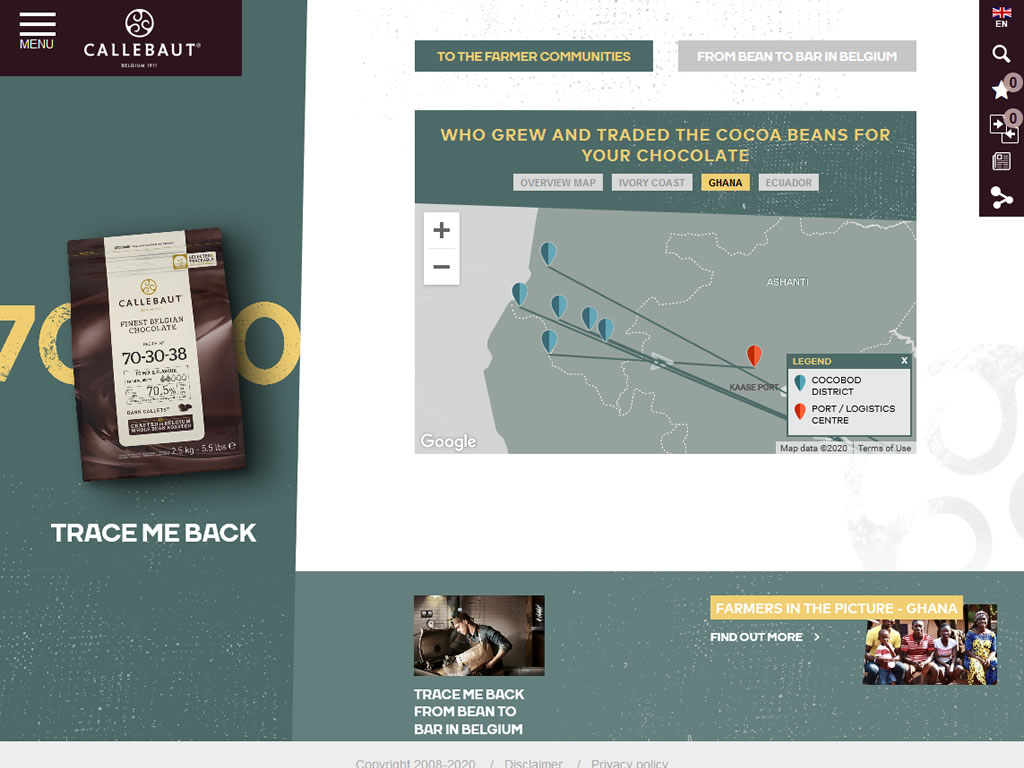
On the "bean to bar" panel, it shows the location of each step of the chocolate making process. For this particular 10kg bag of Callebaut 845 milk chocolate couverture, cocoa selection took place in Wieze, Belgium (almost in the centre of a triangle on the map between Brussels, Ghent, and Antwerp). A week later, the bean blending took place in Antwerp, Belgium. A couple of days later it was back in Wieze for whole bean roasting and refining of cocoa liquor. The next day it underwent ingredient mixing and dry and wet conching in Wieze to perfect the fluidity. The next day, the Wieze plant formed the Callets and packed them, before sending them to the European Distribution centre in Aalst, Belgium, on the same day.
As for the 2.5kg bag of Callebaut 70-30-38 dark chocolate, it too followed the same production process except for the moulding into Callets and the packing which both took place in Halle, Belgium. Interestingly, no processing dates were available for this particular tracking code.
Overall, it's very useful information that can only help empower chocolatiers to explain to their customers where their Finest Belgian Chocolate originates.
Improvements I'd Like to See
This is undoubtedly a positive first step by Callebaut in offering its customers more visibility over the exact origins of its chocolate. The sheer size of the Group means that it wields great power, and the impact of positive economic, environmental, and societal changes it makes can ripple out across the entire industry. I bet we'll see other couverture and chocolate brands following suit with their own supply chain visibility tools in due course.
Detailed Tracing
However, the Callebaut Cocoa Horizons tracing tool isn't perfect just yet. Right now, we - as consumers - cannot see which farms supply the organisations that supplies beans to Callebaut. There is, however, a tally of active Cocoa Horizons farmers listed for selected Cocobod Districts in Ghana and cooperatives in the Ivory Coast, but this isn't available for every location on the map yet.
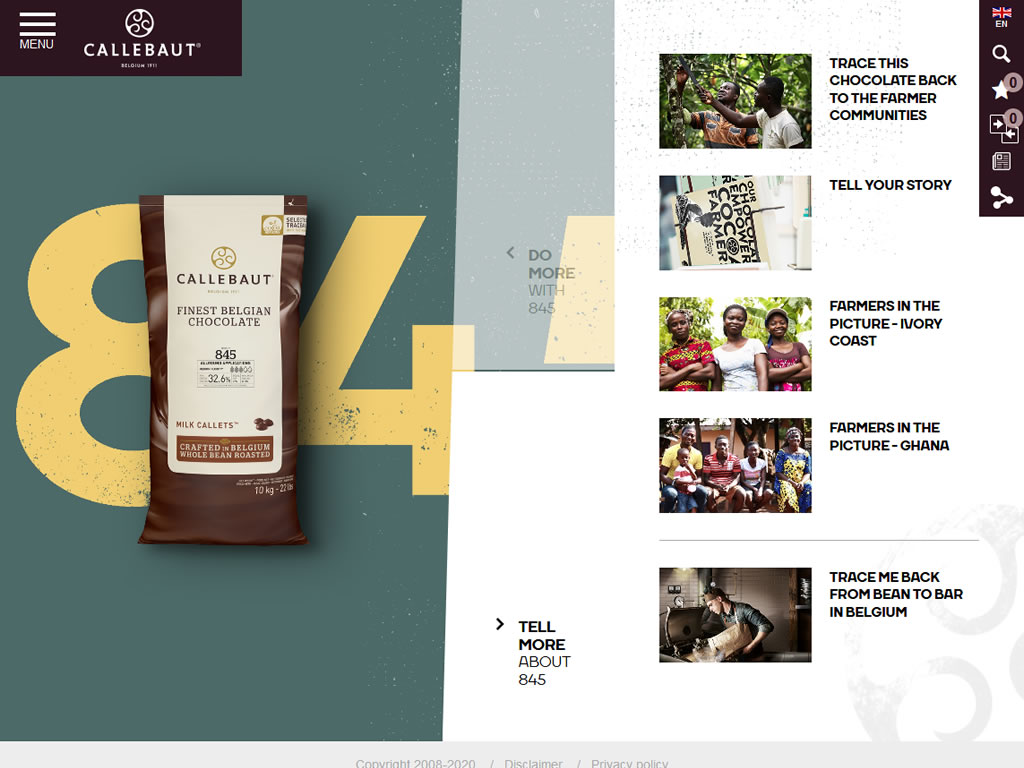
There's good reason why there's better data available for Ghanaian and Ivorian supply chains, as a spokesperson for the Barry Callebaut Group confirmed that these two regions have been prioritised as part of the Cocoa and Forests Initiative (CFI), which is a multi-stakeholder initiative dedicated to ending cacao farming-induced deforestation in Ghana and Côte d’Ivoire. In line with this goal, the Group claims to have "mapped close to 100% of the farms and warehouses in its direct supply chain at risk of sourcing from protected forest areas."
The spokesperson explained that the Group cannot digitally trace every bean back to every individual farm yet. This is because the cooperatives keep handwritten registers of deliveries and transactions, and this data needs digitising for it to form part of this new interactive website.
The spokesperson also confirmed that the Barry Callebaut Group has "established traceability for a third of its global cocoa volume". The Group seeks to make sustainable chocolate the norm by 2025 in line with its Forever Chocolate commitment. To guarantee sustainable sourcing, the Group must first gain complete visibility over where exactly its beans are grown, which is where the Cocoa Horizons tracing tool slots in.
Carbon Footprint
Another feature I'd like to see is the carbon footprint impact of each bag. Looking from a website developer perspective, it should be relatively easy for the tool to calculate the food miles for each bag of couverture using the origins, transit ports, and processing sites to calculate waypoints. This data could then be calculated per kilogram based on the batch size, and multiplied up to form a carbon footprint score for each bag.
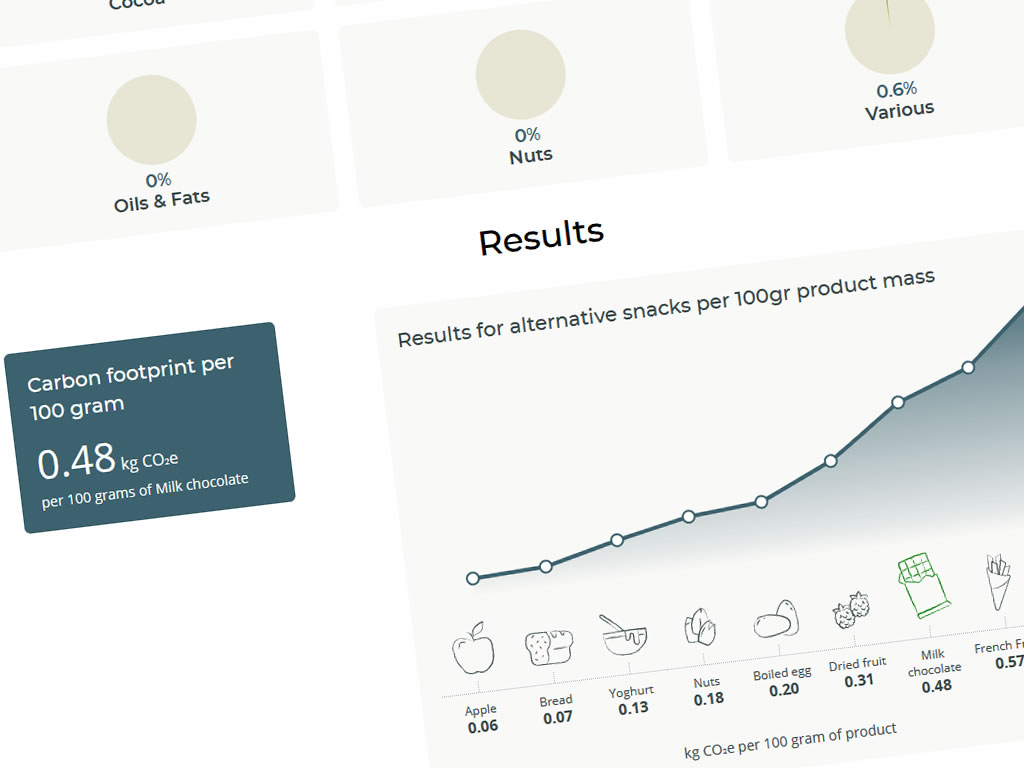
Now that chocolatiers have access to better cocoa origin data, the next step would be to estimate how much CO2 each couverture bag contributes to the planet. Some chocolatiers may choose to offset this carbon through third party schemes, or might be compelled to educate customers and encourage them to donate to tree planting funds.
Interestingly, I spotted that such information exists on a separate platform in a tweet by Barry Callebaut. Their Carbon Footprint Calculator can estimate the carbon footprint of milk, dark and white chocolate (no ruby chocolate yet), based on predefined recipes. You can also adjust the recipe to create a bespoke score for the Callets you use. As an example, the predefined dark chocolate recipe has an impact of around 300g of CO2 per 100g, while the predefined milk and white chocolate recipes both site at around 480g of CO2 per 100g.
Integrating this Carbon Footprint Calculator data into the From Bean to Bar in Belgium Tracing System would be a logical next stage in the platform's development.
Terminology
Lastly, I'm not sure many craft and independent chocolate makers will be happy with the "from bean to bar in Belgium" descriptor used on the tracing site. Indeed, the company does turn cocoa beans into couverture in-house in Belgium, but the bean-to-bar term is a often used by artisan small-scale craft chocolate makers to demonstrate they pay a premium for their beans and craft chocolate bars from scratch in small batches.
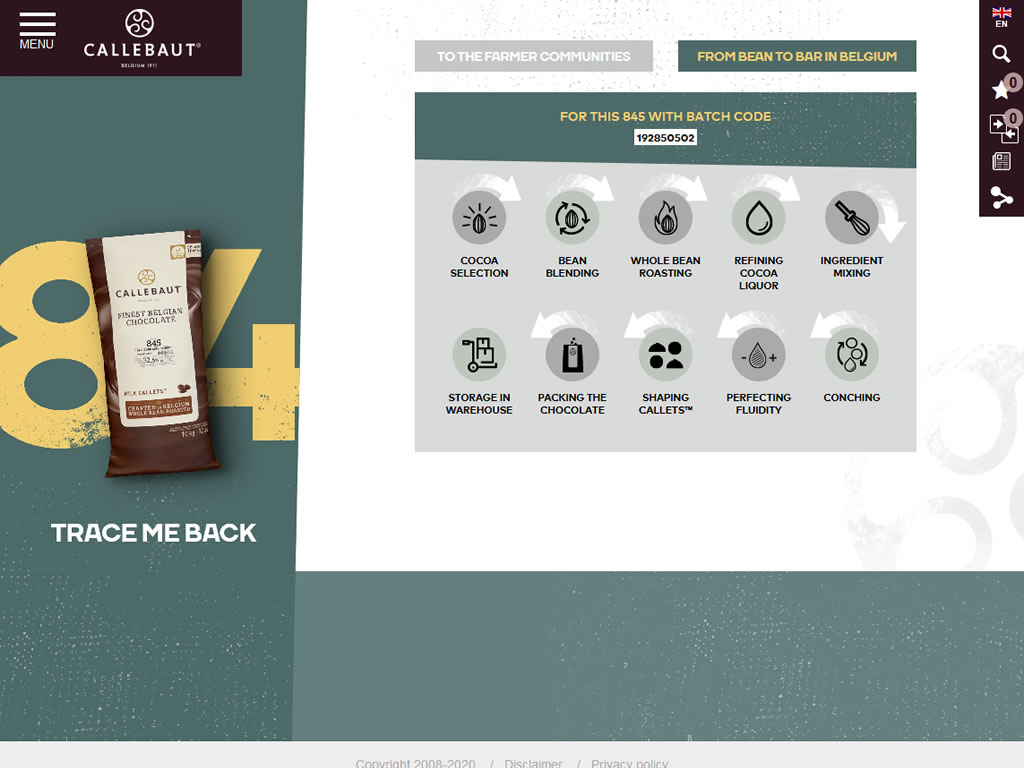
When big brands start using terms like "bean-to-bar" and "single-origin" in their marketing, it can dilute the meaning of these terms in the eyes of the consumer. I would prefer to see Callebaut use the wording "bean to Belgian couverture", "bean to Finest Belgian Chocolate", or "bean to Callet" to describe their manufacturing process.
The Barry Callebaut Group spokesperson told me that the company believes the "bean to bar" term "should not be about size and volume, but about the fact that we have control over the complete production process from raw material to finished product." Furthermore, they added, "for every bag or block of Callebaut chocolate purchased, part goes back to farmer community projects via the Cocoa Horizons foundation".
Callebaut couverture is available to buy from trade and Hobbyist suppliers such as Keylink as well as from Chocolate Trading Co° and Amazon°. The new Callebaut Cocoa Horizons tracing packaging is being rolled out now.
Get free delivery on orders over £35 (excluding sales and trade items). Use code WYS35 at the checkout. Shop at Chocolate Trading Company°
Ends on Tuesday 31st December 2024. Terms and exclusions may apply. See website for details.
Save 10% on orders, excluding trade and sale products. Use code CHOCO10APR24 at the checkout. Shop at Chocolate Trading Company°
Ends on Tuesday 30th April 2024. Terms and exclusions may apply. See website for details.
Have you purchased Callebaut Callets and have tracked its origins using the new Callebaut Cocoa Horizons tracing tool? Is there any other information you'd like to see added to the platform? Share your thoughts in a comment below.

